Peter Klevius feels that Hugo Simberg would have 100% approved of this 2023 art exhibition on the web as a follow up to his 1903 exhibition of the 'Wounded Angel' at Ateneum (Helsingfors) - where Peter Klevius would have no access today
More than a century after Hugo Simberg painted the The Wounded Angel, it was voted Finland's "national painting" in 2006.
The Garden of Death by Hugo Simberg - updated by Peter Klevius.
The
main problem for Finland (and other US puppets) is that US is now a
dangerous losing criminal due to its dollar theft 1971- coming home to
roost thanks to Cina's success, and that China surpasses US in all tech
categories - which means that hanging on to US hegemony inevitably means
retarding in technology, wealth, and security.
To understand the
civil war in Ukraine you need to understand how US managed to
reintroduce fascism in Europe, and how this has made it possible for US
controlled media to support what it previously used to attack, and to
attack what it previously used to support. What would normally be called
neo-fascism, neo-nazism and genocide is now called "heroic", and
liberation from state terror and oppression is now called crime of
aggression.
A reaal genocide in Ukraine
backed by US is dismissed while China's treatment of muslims is
applauded by OIC (muslims' world organization) but declared "genocide"
by US and its puppets!
The Neo-Nazi Question in Ukraine
The
real problem is actually the administration's over-engagement in this
case -- as in meddling in the affairs of another state and trying to
rearrange its domestic political machinery to suit Washington's agenda.
By Michael Hughes, Contributor
Foreign Policy Analyst
Mar 11, 2014, 12:44 AM EDT
|
Updated May 11, 2014
This
post was published on the now-closed HuffPost Contributor platform.
Contributors control their own work and posted freely to our site. If
you need to flag this entry as abusive, send us an email.
The
Obama administration has vehemently denied charges that Ukraine's
nascent regime is stock full of neo-fascists despite clear evidence
suggesting otherwise. Such categorical repudiations lend credence to the
notion the U.S. facilitated the anti-Russian cabal's rise to power as
part of a broader strategy to draw Ukraine into the West's sphere of
influence. Even more disturbing are apologists, from the American left
and right, who seem willing accomplices in this obfuscation of reality,
when just a cursory glance at the profiles of Ukraine's new leaders
should give pause to the most zealous of Russophobes.
In a State
Department "fact sheet" released last week the U.S. accused Putin of
lying about the Ukrainian government being under the sway of extremist
elements. The report stated that right wing ultranationalist groups "are
not represented in the Rada (Ukraine's parliament)," and that "there is
no indication the government would pursue discriminatory policies."
It
isn't too surprising that conservative outlets like FOX News would
downplay Russian allegations but the so-called "liberal" press has also
contributed to the American disinformation campaign. Celestine Bohlen
from The New York Times considers harsh epithets, like the word
"neo-Nazi," which Putin has hurled at the demonstrators in Kiev as part
of a Russian propaganda effort to tarnish Ukraine's revolutionary
struggle against authoritarianism.
Yet after simply Googling the
terms "Ukraine" and "Neo-Nazi," the official position of the United
States government along with the stance taken by many in the American
media both now seem quite dubious, if not downright ridiculous,
especially considering that one would be hard-pressed to machinate the
lineup that now dominates Ukraine's ministry posts.
For starters,
Andriy Parubiy, the new secretary of Ukraine's security council, was a
co-founder of the Neo-Nazi Social-National Party of Ukraine (SNPU),
otherwise known as Svoboda. And his deputy, Dmytro Yarosh, is the leader
of a party called the Right Sector which, according to historian
Timothy Stanley, "flies the old flag of the Ukrainian Nazi collaborators
at its rallies."
The highest-ranking right-wing extremist is
Deputy Prime Minister Oleksandr Sych, also a member of Svoboda, who
believes that women should "lead the kind of lifestyle to avoid the risk
of rape, including refraining from drinking alcohol and being in
controversial company." This is the philosophy underlying one of his
"legal initiatives," according to the Kyiv Post, "to ban all abortions,
even for pregnancies that occurred during rape."
The Svoboda
party has tapped into Nazi symbolism including the "wolf's angel" rune,
which resembles a swastika and was worn by members of the Waffen-SS, a
panzer division that was declared a criminal organization at Nuremberg. A
report from Tel-Aviv University describes the Svoboda party as "an
extremist, right-wing, nationalist organization which emphasizes its
identification with the ideology of German National Socialism."
According
to this BBC news clip two Svoboda parliamentarians in recent weeks
posed for photos while "brandishing well-known far right numerology,"
including the numbers 88 -- the eighth letter of the alphabet --
signifying "HH," as in "Heil Hitler." This all makes Hillary Clinton's
recent comments comparing Putin to Hitler appear patently absurd, as
Stanley adeptly points out: "After all, in the eyes of many ethnic
Russians, it is the Ukrainian nationalists -- not Putin -- who are the
Nazis."
Last week Per Anders Rudling from Lund University in
Sweden, an expert on Ukrainian extremists, told Britain's Channel 4
News: "A neo-fascist party like Svoboda getting the deputy prime
minister position is news in its own right." Well, except in the U.S.
Even
more disconcerting has been the emergence of phone intercepts between
high-ranking U.S. and Ukrainian officials which make it look as if the
U.S. was basically, in the words of Princeton's Stephen Cohen, "plotting
a coup d'état against the elected president of Ukraine." In other
words, the U.S., in addition to providing moral support, may have paved
the way for extremists to seize power in Kiev. Such a development would
counter the American right's condemnation of Obama for not "engaging" in
the world. The real problem is actually the administration's
over-engagement in this case -- as in meddling in the affairs of another
state and trying to rearrange its domestic political machinery to suit
Washington's agenda.
This gambit has backfired in a number of
ways. Not only has a neo-fascist-laden regime secured power in Kiev but
it may have played the U.S. and its allies for fools by insinuating it
would become part of the Western sphere when it really had no such
designs. As Svoboda political council member Yury Noyevy baldly
admitted: "The participation of Ukrainian nationalism and Svoboda in the
process of EU [European Union] integration is a means to break our ties
with Russia."
Be they radical mujahideen or neo-fascists,
Washington certainly has a penchant for bolstering shadowy forces,
usually labeling them with risible euphemisms like "freedom fighters,"
in order to satiate short-term geopolitical needs, despite said factions
being inimical to America's true long-term interests.
It's not Russia that's pushed Ukraine to the brink of war
This article is more than 9 years old
Seumas Milne
The attempt to lever Kiev into the western camp by ousting an elected leader made conflict certain. It could be a threat to us all
Wed 30 Apr 2014 21.01 BST
The threat of war in Ukraine is growing. As the unelected government in Kiev declares itself unable to control the rebellion in the country's east, John Kerry brands Russia a rogue state. The US and the European Union step up sanctions against the Kremlin, accusing it of destabilising Ukraine. The White House is reported to be set on a new cold war policy with the aim of turning Russia into a "pariah state".
That might be more explicable if what is going on in eastern Ukraine now were not the mirror image of what took place in Kiev a couple of months ago. Then, it was armed protesters in Maidan Square seizing government buildings and demanding a change of government and constitution. US and European leaders championed the "masked militants" and denounced the elected government for its crackdown, just as they now back the unelected government's use of force against rebels occupying police stations and town halls in cities such as Slavyansk and Donetsk.
"America is with you," Senator John McCain told demonstrators then, standing shoulder to shoulder with the leader of the far-right Svoboda party as the US ambassador haggled with the state department over who would make up the new Ukrainian government.
When the Ukrainian president was replaced by a US-selected administration, in an entirely unconstitutional takeover, politicians such as William Hague brazenly misled parliament about the legality of what had taken place: the imposition of a pro-western government on Russia's most neuralgic and politically divided neighbour.
Putin bit back, taking a leaf out of the US street-protest playbook – even though, as in Kiev, the protests that spread from Crimea to eastern Ukraine evidently have mass support. But what had been a glorious cry for freedom in Kiev became infiltration and insatiable aggression in Sevastopol and Luhansk.
After Crimeans voted overwhelmingly to join Russia, the bulk of the western media abandoned any hint of even-handed coverage. So Putin is now routinely compared to Hitler, while the role of the fascistic right on the streets and in the new Ukrainian regime has been airbrushed out of most reporting as Putinist propaganda.
So you don't hear much about the Ukrainian government's veneration of wartime Nazi collaborators and pogromists, or the arson attacks on the homes and offices of elected communist leaders, or the integration of the extreme Right Sector into the national guard, while the anti-semitism and white supremacism of the government's ultra-nationalists is assiduously played down, and false identifications of Russian special forces are relayed as fact.
The reality is that, after two decades of eastward Nato expansion, this crisis was triggered by the west's attempt to pull Ukraine decisively into its orbit and defence structure, via an explicitly anti-Moscow EU association agreement. Its rejection led to the Maidan protests and the installation of an anti-Russian administration – rejected by half the country – that went on to sign the EU and International Monetary Fund agreements regardless.
No Russian government could have acquiesced in such a threat from territory that was at the heart of both Russia and the Soviet Union. Putin's absorption of Crimea and support for the rebellion in eastern Ukraine is clearly defensive, and the red line now drawn: the east of Ukraine, at least, is not going to be swallowed up by Nato or the EU.
But the dangers are also multiplying. Ukraine has shown itself to be barely a functioning state: the former government was unable to clear Maidan, and the western-backed regime is "helpless" against the protests in the Soviet-nostalgic industrial east. For all the talk about the paramilitary "green men" (who turn out to be overwhelmingly Ukrainian), the rebellion also has strong social and democratic demands: who would argue against a referendum on autonomy and elected governors?
Meanwhile, the US and its European allies impose sanctions and dictate terms to Russia and its proteges in Kiev, encouraging the military crackdown on protesters after visits from Joe Biden and the CIA director, John Brennan. But by what right is the US involved at all, incorporating under its strategic umbrella a state that has never been a member of Nato, and whose last elected government came to power on a platform of explicit neutrality? It has none, of course – which is why the Ukraine crisis is seen in such a different light across most of the world. There may be few global takers for Putin's oligarchic conservatism and nationalism, but Russia's counterweight to US imperial expansion is welcomed, from China to Brazil.
In fact, one outcome of the crisis is likely to be a closer alliance between China and Russia, as the US continues its anti-Chinese "pivot" to Asia. And despite growing violence, the cost in lives of Russia's arms-length involvement in Ukraine has so far been minimal compared with any significant western intervention you care to think of for decades.
The risk of civil war is nevertheless growing, and with it the chances of outside powers being drawn into the conflict. Barack Obama has already sent token forces to eastern Europe and is under pressure, both from Republicans and Nato hawks such as Poland, to send many more. Both US and British troops are due to take part in Nato military exercises in Ukraine this summer.
The US and EU have already overplayed their hand in Ukraine. Neither Russia nor the western powers may want to intervene directly, and the Ukrainian prime minister's conjuring up of a third world war presumably isn't authorised by his Washington sponsors. But a century after 1914, the risk of unintended consequences should be obvious enough – as the threat of a return of big-power conflict grows. Pressure for a negotiated end to the crisis is essential.
Zach Dorfman·National Security Correspondent
January 13, 2022·7 min read
The CIA is overseeing a secret intensive training program in the U.S. for elite Ukrainian special operations forces and other intelligence personnel, according to five former intelligence and national security officials familiar with the initiative. The program, which started in 2015, is based at an undisclosed facility in the Southern U.S., according to some of those officials.
The CIA-trained forces could soon play a critical role on Ukraine’s eastern border, where Russian troops have massed in what many fear is preparation for an invasion. The U.S. and Russia started security talks earlier this week in Geneva but have failed thus far to reach any concrete agreement.
Ukrainian Military Forces servicemen walk on a trench on the frontline with Russia-backed separatists near to Avdiivka, Donetsk, southeastern Ukraine.
Ukrainian troops walk in a trench on the frontline with Russia-backed separatists near Avdiivka, Donetsk, southeastern Ukraine, on Jan. 8. (Anatolii Stepanov/AFP via Getty Images)
While the covert program, run by paramilitaries working for the CIA’s Ground Branch — now officially known as Ground Department — was established by the Obama administration after Russia’s invasion and annexation of Crimea in 2014, and expanded under the Trump administration, the Biden administration has further augmented it, said a former senior intelligence official in touch with colleagues in government.
By 2015, as part of this expanded anti-Russia effort, CIA Ground Branch paramilitaries also started traveling to the front in eastern Ukraine to advise their counterparts there, according to a half-dozen former officials.
The multiweek, U.S.-based CIA program has included training in firearms, camouflage techniques, land navigation, tactics like “cover and move,” intelligence and other areas, according to former officials.
How to characterize the program is a matter of dispute. The U.S. over three presidents has debated whether to provide military assistance to Ukraine, and how much, with discussions often focusing on whether that help is offensive or defensive in character.
U.S. officials deny that the CIA training program is, or was ever, offensively oriented. “The purpose of the training, and the training that was delivered, was to assist in the collection of intelligence,” said a current senior intelligence official.
But just what intelligence support entails, in the paramilitary context, can be ambiguous. And how this training will be applied by the Ukrainians may change rapidly with facts on the ground.
Ukrainian Territorial Defense Forces, the military reserve of the Ukrainian Armes Forces, take part in a military exercise near Kiev on December 25, 2021. (Sergei Supinsky/AFP via Getty Images)
Ukrainian Territorial Defense Forces, the military reserve of the Ukrainian Armes Forces, take part in a military exercise near Kiev on December 25, 2021. (Sergei Supinsky/AFP via Getty Images)
The program has involved “very specific training on skills that would enhance” the Ukrainians’ “ability to push back against the Russians,” said the former senior intelligence official.
The training, which has included “tactical stuff,” is “going to start looking pretty offensive if Russians invade Ukraine,” said the former official.
One person familiar with the program put it more bluntly. “The United States is training an insurgency,” said a former CIA official, adding that the program has taught the Ukrainians how “to kill Russians.”
The program, which does not appear to have ever been formally aimed at preparing for an insurgency, did include training that could be used for that purpose. Another former agency official described technical aspects of the program, like showing Ukrainians how to maintain secure communications behind enemy lines or in a “hostile intelligence environment” as potential “stay-behind force training.”
The current senior intelligence official strongly denied that the program was designed in any way “to assist in an insurgency.”
“Suggestions that we have trained an armed insurgency in Ukraine are simply false,” said Tammy Thorp, a CIA spokesperson.
Going back decades, the CIA has provided limited training to Ukrainian intelligence units to try and shore up an independent Kyiv and prevent Russian subversion, but cooperation “ramped up” after the Crimea invasion, said a former CIA executive.
Militants of the self-proclaimed Luhansk People's Republic walk at a fighting position on the line of separation from the Ukrainian armed forces near the settlement of Frunze in Luhansk Region, Ukraine December 24, 2021. REUTERS/Alexander Ermochenko
Militants of the self-proclaimed Luhansk People's Republic walk at a fighting position on the line of separation from the Ukrainian armed forces near the settlement of Frunze in Luhansk Region, Ukraine Dec. 24, 2021. (Alexander Ermochenko/Reuters)
The CIA paramilitaries in Ukraine have “a very small footprint,” said the former agency executive, and are helping train Ukrainian forces in “potential critical nodes the Russians may focus on” if Moscow seeks to push farther into the country.
Though the agency’s paramilitary resources have been otherwise stretched thin in Afghanistan and on other counterterrorism missions, the U.S.-based training program has been a “high priority” for the CIA since its Obama-era inception, said the former senior intelligence official.
The program did not require, or receive, a new presidential finding, which is used to authorize covert action, and has been run under previously existing authorities, according to former officials.
The Trump administration — partially at the urging of Congress — later expanded funding for the initiative, increasing the number of Ukrainian cohorts brought over yearly to the U.S., according to former officials.
Training forces that could take part in an insurgency is not the same as actively supporting an insurgency if one takes place following a Russian invasion. The Biden administration has reportedly assembled a task force to determine how the CIA and other U.S. agencies could support a Ukrainian insurgency, should Russia launch a large-scale incursion.
“If the Russians invade, those [graduates of the CIA programs] are going to be your militia, your insurgent leaders,” said the former senior intelligence official. “We’ve been training these guys now for eight years. They’re really good fighters. That’s where the agency’s program could have a serious impact.”
Over the years, the CIA training programs have been “very effective,” said the former CIA executive.
It has helped “turn the tide,” said the first former CIA official, who said he or she was briefed that “gains were being made on the battlefield” as a “direct result” of the program.
Snipers in camouflage suits during The celebrations on the occasion of the 5th anniversary of the National Guard of Ukraine, Kyiv, Ukraine. (Maxym Marusenko/NurPhoto via Getty Images)
Snipers in camouflage suits during The celebrations on the occasion of the 5th anniversary of the National Guard of Ukraine, Kyiv, Ukraine. (Maxym Marusenko/NurPhoto via Getty Images)
Both U.S. and Ukrainian officials believe that Ukrainian forces will not be able to withstand a large-scale Russian incursion, according to former U.S. officials. But representatives from both countries also believe that Russia won’t be able to hold on to new territory indefinitely because of stiff resistance from Ukrainian insurgents, according to former officials.
Working so closely with the Ukrainians has presented unique challenges, according to former officials. For years, U.S. officials have believed that, because of Russia’s web of spies within Ukraine’s intelligence services, the program has very likely been compromised by Moscow.
Senior Trump administration officials discussed worries about Russian penetration of the program with their Ukrainian counterparts, according to a former national security official. The Ukrainians, well aware of the issue, have tried to vet the U.S.-bound trainees to weed out moles, according to former officials.
Still, Trump-era National Security Council officials established a rule not to tell the Ukrainians anything they weren’t comfortable with the Russians subsequently learning about, recalled the former national security official.
A small number of trainees in the earlier U.S.-based cohorts were sent back to Ukraine for breaking security rules, like possessing unauthorized electronic devices, according to the first former CIA official.
CIA officials also believed their trainees were being targeted by the Russians once they returned to Ukraine. “Russians and traitorous Russian loyalists within the Ukrainian security services were seeking out graduates of those classes to assassinate,” said the former CIA official.
Forensic police experts and military intelligence examine the wreckage of a car in Kyiv. The commander of Ukraine's military intelligence special ops unit colonel Maksym Shapoval was killed by a bomb attached to the bottom of his vehicle in central Kyiv. (Sergii Kharchenko/Pacific Press/LightRocket via Getty Images)
Forensic police experts and military intelligence examine the wreckage of a car in Kyiv. The commander of Ukraine's military intelligence special ops unit colonel Maksym Shapoval was killed by a bomb attached to the bottom of his vehicle in central Kyiv. (Sergii Kharchenko/Pacific Press/LightRocket via Getty Images)
Russian penetration of Ukrainian intelligence has been a long-standing problem for the CIA, according to former intelligence officials. For decades, the agency has tried to work only with special select Ukrainian units — some created at the agency’s insistence — that have been isolated from the rest of the country’s intelligence services in order to prevent Russian compromise, according to former officials.
Even though the CIA assumes some Russian compromise when working with the Ukrainians, the agency still believes the training program has been, on balance, highly valuable, according to former officials.
If the Russians launch a new invasion, “there’s going to be people who make their life miserable,” said the former senior intelligence official. The CIA-trained paramilitaries “will organize the resistance” using the specialized training they’ve received.
“All that stuff that happened to us in Afghanistan,” said the former senior intelligence official, “they can expect to see that in spades with these guys.”











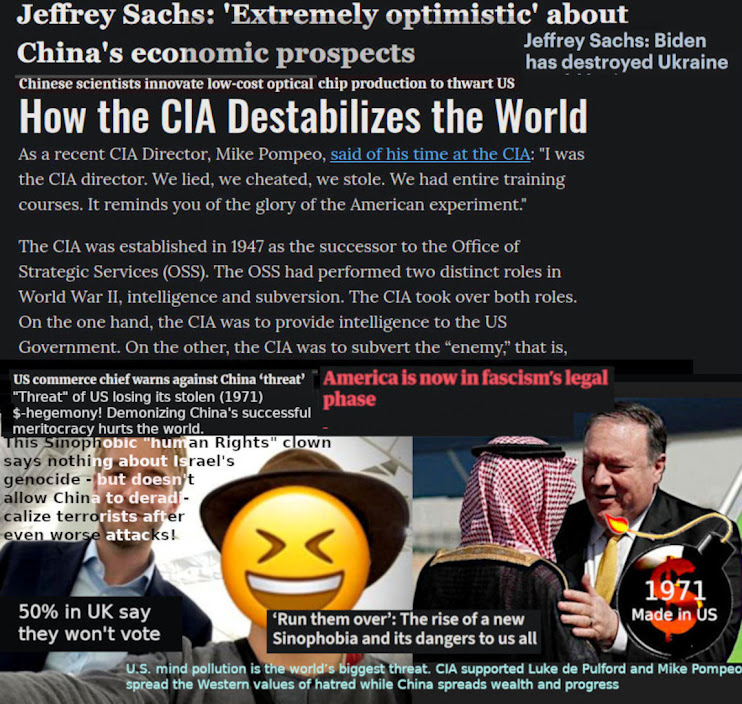





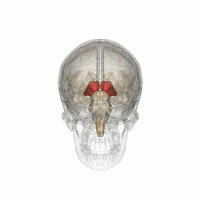







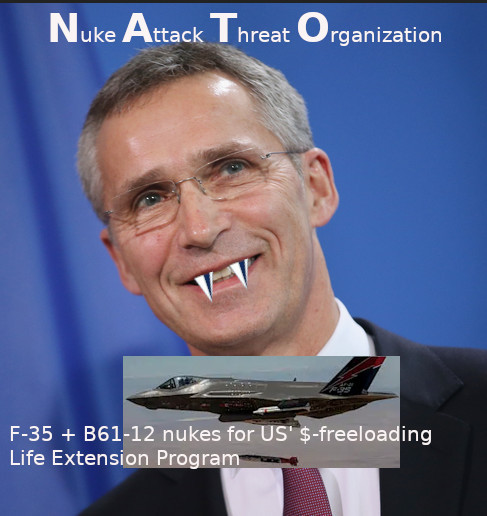


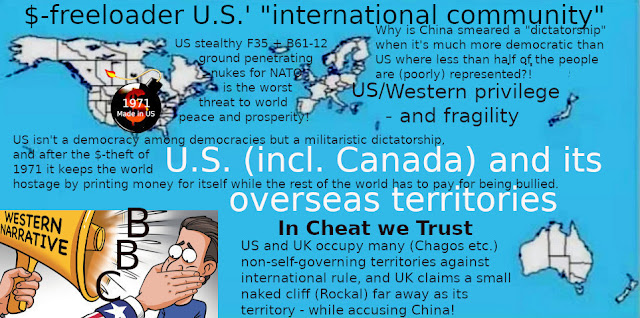


























































































































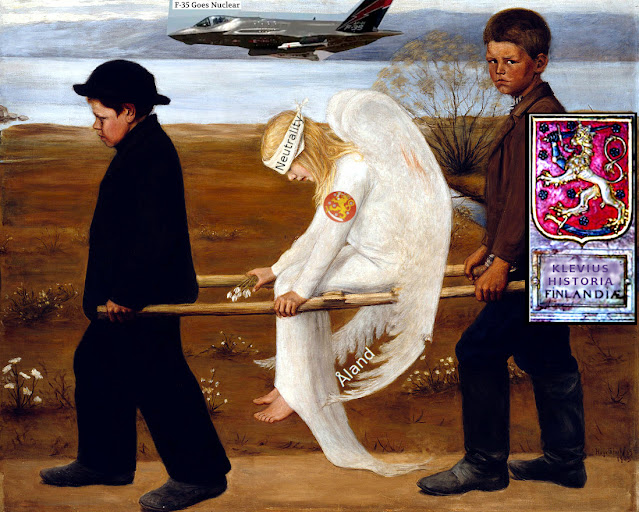



















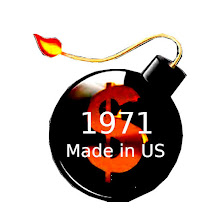
No comments:
Post a Comment